All Projects
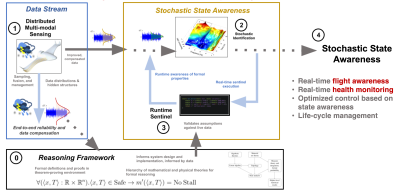 Formal verification of stochastic state awareness for dynamic data-driven aerospace systems
Formal verification of stochastic state awareness for dynamic data-driven aerospace systems
Postulation of novel formal verification framework for stochastic state awareness of intelligent aerial vehicles. This is a joint effort with Prof. Carlos Varela from the Computer Science Department at RPI.
Machine learning for reduced order and multi-fidelity modeling
Development of stochastic reduced order and multi-fidelity models based on novel machine learning methods.
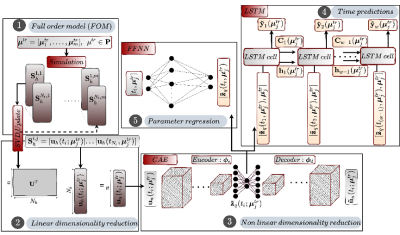 Machine-learning enabled non-intrusive reduced order modeling
Machine-learning enabled non-intrusive reduced order modeling
The use of structural health monitoring (SHM) serves to assist the monitoring of aircraft structures thus leading to improved life-cycle management and condition-based maintenance. However, monitoring the structural behavior becomes challenging when dealing with operating and environmental uncertainties involved in both vibration-based signals and propagation of guided waves (active sensing SHM), over the variations in the material properties, loads, boundary conditions and so on. In this direction, computational structural mechanics has proven to be a unique tool in the development of numerical models that can precisely capture the operational performance of structures. Physics-based high-fidelity models (HFMs) can accurately simulate the performance of the real system and provide a useful insight while enabling enhanced diagnostic and prognostic methods. While HFMs are the backbone of the engineering design, the computational cost is increasing when simulating large scale, unsteady numerical problems. Along these lines, the demand for multi-fidelity approaches consisting of simplified techniques, able to deliver results in a limited amount of time, is growing rapidly. In this content, surrogate modeling has gained attention, aiming to reduce the computational cost of HFMs while providing results in a limited amount of time towards the realization of the digital twin (DT) concept. Reduced order modeling (ROM), as part of the surrogate modeling, has extensively been applied to decrease the simulation cost, while preserving the dominant effects of the HFM. ROMs have emerged as a useful technique to decrease the computational cost of numerical simulations and provide solutions in a limited amount of time.
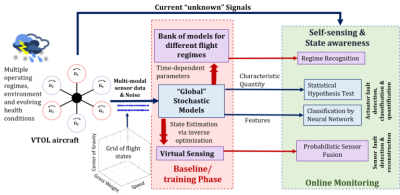 Data-driven statistical learning framework towards future state-aware VTOL aircraft
Data-driven statistical learning framework towards future state-aware VTOL aircraft
The operational success of Urban air mobility (UAM), enabled by autonomous electric Vertical Take-Off and Landing (eVTOL) aircraft requires real time safety assurance and complete autonomy. According to a technical report by Uber Elevate, the safety level in air-taxi aviation needs to improve from 1.2 to 0.3 fatalities per 100 million passenger miles through innovation with large amounts of data from real-world operations after the first-generation VTOLs are in production. To achieve that, development of a real-time system-health awareness and state sensing framework is in progress.
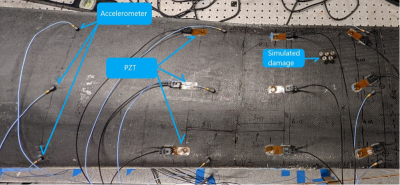 Integration of global and local structural health monitoring via multi-modal sensing
Integration of global and local structural health monitoring via multi-modal sensing
In the arena of structural health monitoring (SHM), ultrasonic guided wave-based and vibration-based damage detection and identification methods constitute two seemingly distinct approaches, oftentimes treated separately. Guided-waves-based methods are typically used for ``local'' damage diagnosis due to their increased sensitivity while vibration-based methods are based on the premise that damage has an impact on the global structural dynamic response, therefore are typically used for tackling ``global'' damage diagnosis. The challenge is that the local approach can detect small damage that does not affect the global dynamic response, therefore the global approach might miss. But local approach doesn’t provide state awareness of global dynamic performance. Moreover, as damage propagates, the robustness of the quantification can be enhanced by combining both local and global approaches. The goal of this work is to demonstrate and assess the effectiveness and robustness of the combined local-global methods both numerically and experimentally.
Data-driven Statistical-Learning Framework Towards Future Autonomous Self-Sensing State-Aware VTOL Aircraft
The operational success of Urban air mobility (UAM), enabled by autonomous electric Vertical Take-Off and Landing (eVTOL) aircraft requires real time safety assurance and complete autonomy. According to a technical report by Uber Elevate, the safety level in air-taxi aviation needs to improve from 1.2 to 0.3 fatalities per 100 million passenger miles through innovation with large amounts of data from real-world operations after the first-generation VTOLs are in production. To achieve that, development of a real-time system-health awareness and state sensing framework is in progress
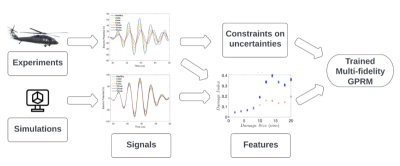 Structural state estimation via multi-fidelity Gaussian process regression models
Structural state estimation via multi-fidelity Gaussian process regression models
Most existing active-sensing guided-wave methods are based on the requirement that a relatively large data set can be collected, and thus are not feasible when data collection is restricted by time or environmental conditions. Meanwhile, simulation results, though lack of accuracy compared to real world data, are easier to obtain. In this context, models that incorporate data from different sources have the potential to embrace the accuracy of experimental data and the convenience of simulated data without the necessity of large and, potentially costly, experimental data sets.
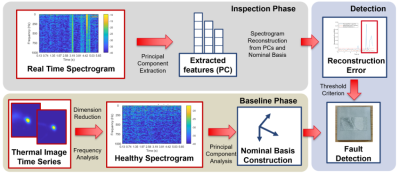 Unsupervised online anomaly detection of metal additive manufacturing processes via statistical time-frequency domain analysis
Unsupervised online anomaly detection of metal additive manufacturing processes via statistical time-frequency domain analysis
Additive manufacturing is a relatively nascent field of manufacturing that relies on the addition rather than the removal of material to construct a desired article. During the fabrication process, imperfections may occur which negatively impact the structure and surface quality of the manufactured part, among other qualities. These imperfections can be monitored and characterized while part is assembled, which allows for feedback control of the process parameters. Through an effective implementation, a higher accuracy in production can be expected, along with greater structural integrity.
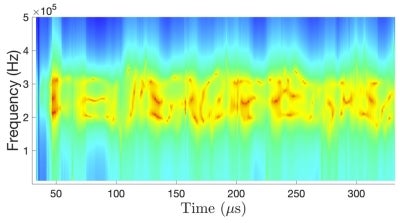 Data-driven stochastic identification of guided waves propagation under varying environmental and operating conditions
Data-driven stochastic identification of guided waves propagation under varying environmental and operating conditions
The motivation for this study is to model guided wave propagation under uncertainty in order to develop a robust SHM system and impart intelligence and awareness in smart structures. In order to do so, we have harnessed stochastic time series models, advanced statistics, stochastic signals and systems theory and more recently, machine learning or statistical learning tools such as gaussian process regression models.
 Probabilistic SHM under varying loads via the integration of data- and physics-based models
Probabilistic SHM under varying loads via the integration of data- and physics-based models
In this project, a framework was developed that promises the reduction in the training space of GPRMs along with the expansion of GPRM prediction capabilities to encompass damage size predictions under varying conditions. In addition, the proposed framework can also be used for filling the gap in the training space of multi-dimensional GPRMs as will be shown.
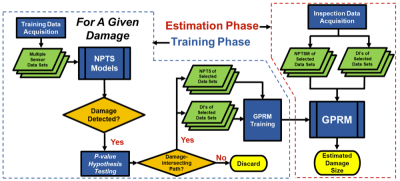 Probabilistic structural health monitoring framework based on Gaussian process regression models
Probabilistic structural health monitoring framework based on Gaussian process regression models
When it comes to active-sensing guided wave SHM, one of the major challenges the SHM community is facing today is related to enabling accurate and robust damage detection and quantification under stochastic, spatially- and time-varying operational and environmental conditions the --oftentimes limited-- available information. In addition, the currently utilized techniques suffer from low damage/damage evolution sensitivity, need for user-defined thresholds, and non-uniform response across a sensor network, amongst others.
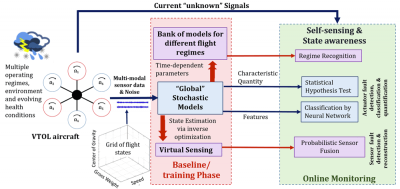 Data-driven Statistical-Learning Framework Towards Future Autonomous Self-Sensing State-Aware VTOL Aircraft
Data-driven Statistical-Learning Framework Towards Future Autonomous Self-Sensing State-Aware VTOL Aircraft
The operational success of Urban air mobility (UAM), enabled by autonomous electric Vertical Take-Off and Landing (eVTOL) aircraft requires real time safety assurance and complete autonomy. According to a technical report by Uber Elevate, the safety level in air-taxi aviation needs to improve from 1.2 to 0.3 fatalities per 100 million passenger miles through innovation with large amounts of data from real-world operations after the first-generation VTOLs are in production. To achieve that, development of a real-time system-health awareness and state sensing framework is in progress.
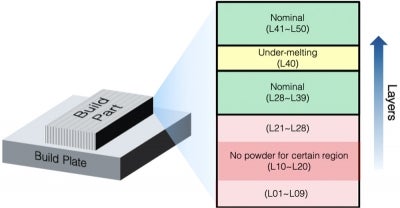 Applications of Flaw Detection in Additive Manufacturing
Applications of Flaw Detection in Additive Manufacturing
Additive manufacturing (AM) is a relatively nascent field of manufacturing that relies on the addition rather than the removal of material to construct a desired article. During the fabrication process, imperfections may occur which negatively impact the structure and surface quality of the manufactured part, among other qualities. These imperfections can be monitored and characterized while part is assembled, which allows for feedback control of the process parameters.
Structural Health Monitoring (SHM)
Development of novel statistical and probabilistic active and passive sensing SHM methods enabled by advanced stochastic models and machine learning approaches.
Intelligent systems with state sensing and awareness capabilities
Development and exploration of novel data-driven stochastic modeling and learning approaches for enabling intelligent self-aware "fly-by-feel" aerial vehicles of the future
 Data-driven probabilistic structural health monitoring via stochastic functional time series models
Data-driven probabilistic structural health monitoring via stochastic functional time series models
Novel sensing technologies enable aerial vehicles to continuously gather information related to their operating and structural states. Incipient damage can be detected, localized and quantified with proper implementation of onboard sensor networks and SHM algorithms. Efforts towards developing identification techniques for data-driven aeroelastic modeling, damage assessment and online parameter estimation have been previously developed. However, the treatment of constantly varying operating and structural states within complex dynamic environments remains a significant challenge that needs to be addressed.
Data-driven stochastic modeling and identification
Development of data-driven stochastic modeling and identification methods for time-invariant, time-varying, and nonlinear systems.